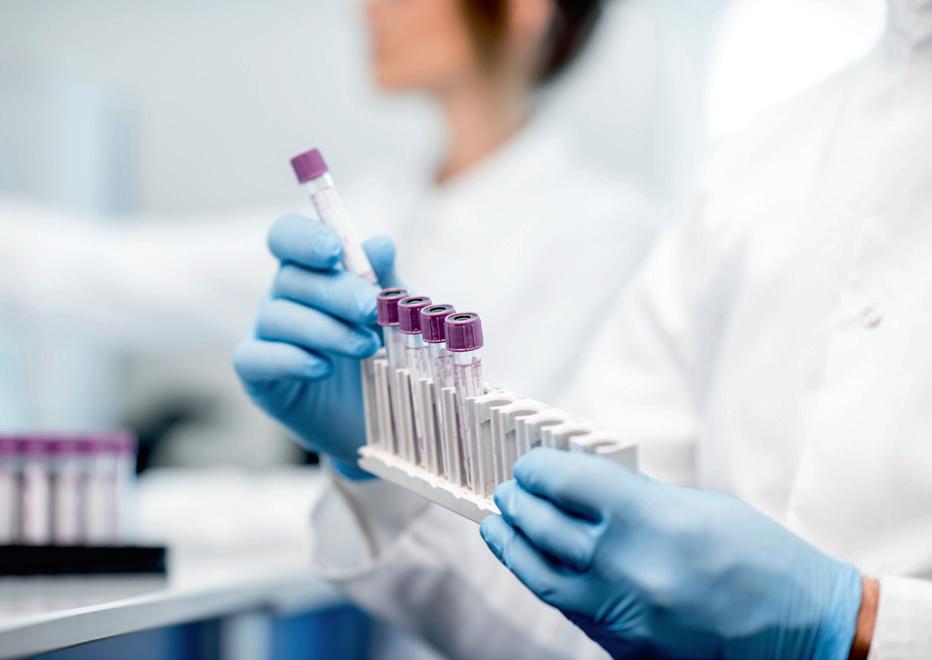BIOCOMPATABILITY
MARK CABONCE, PRINCIPAL TOXICOLOGIST, SANDI SCHAIBLE, SENIOR DIRECTOR OF ANALYTICAL CHEMISTRY AND REGULATORY TOXICOLOGY, AND DR SHERRY PARKER, SENIOR DIRECTOR OF REGULATORY TOXICOLOGY, WUXI APPTEC ADVISE HOW MEDICAL DEVICE MANUFACTURERS CAN BEST NAVIGATE THE RECENT UPDATES OF ISO 10993-18:2020.
ISO 10993-18:2020’s
NEW CHALLENGES FOR MANUFACTURERS SUBMITTING IN THE EU
T
he International Organization for Standardization (ISO) significantly updated the standard for chemical characterisation when it revised 10993-18:2020 — Chemical characterisation of medical device materials within a risk management process. The revision built a framework for identifying and quantifying medical device materials and constituents in concentrations that could potentially cause toxicological concern. Two primary components introduced in the standard are the analytical evaluation threshold (AET) and intensified extraction requirements. Both components have contributed to a massive increase in the amount of testing each medical device undergoes to support safety. Given the broad and fundamental changes inherent in ISO 1099318:2020, regulatory bodies in the US and the EU have taken a stepwise approach to recognise, adopt and implement the standard. The US Food and Drug Administration (FDA) partially recognised 10993-18:2020 in July 2020 but stopped short of full recognition.1 Still, FDA regulators expect manufacturers submitting products for use in the US to address the requirements of the standard.
what constitutes state-of-the-art analytical chemistry is not explicitly defined in the regulation. The MDR empowers notified bodies (organisations that help shepherd products through regulatory submission) to interpret the meaning of state of the art and work with manufacturers to ensure compliance with standards before submission. Although potentially confusing, EU regulators did not set out to create a challenging system. The European Council and Parliament implemented the MDR to alleviate subjectivity in the submission process and align Europe with evolving global standards. The byproduct of their efforts is a process that requires solid partnerships and precise time management to achieve regulatory success. ISO 10993-18:2020’S IMPACT ON THE EU Expectations for physical/chemical information introduced in ISO 10993-1:2018 — Evaluation and testing within a risk management process, and now ISO 10993-18:2020 have compelled EU and US regulators to prioritise chemistry. Exaggerated and exhaustive extractions and a low AET can yield hundreds, sometimes thousands, of compounds for toxicologists to assess. The number of chemicals to identify and quantify adds a significant amount of time to submission preparation. It also increases the likelihood of unfavourable or “equivocal” findings (that is, those for which toxicologists deem the level of risk unacceptable, given the available information), which could mean more time for risk mitigation.
In the EU, the process is more nuanced. In May 2021, the Medical Device Regulation (MDR) replaced the Medical Device Directive (MDD) as a new, more comprehensive regulatory framework for medical devices in the EU. The regulation framework changed how devices are classified in the EU and introduced stringent requirements that prioritise patient risk. The MDR accepts the revised ISO 10993-18:2020 as “state of the art”; that is, it is the most recent published version of an accepted standard — and holds manufacturers to the standard. But the EU has yet to harmonise the standard across member states. Yet, 14
W W W. M E D I C A L P L A S T I C S N E W S . C O M




